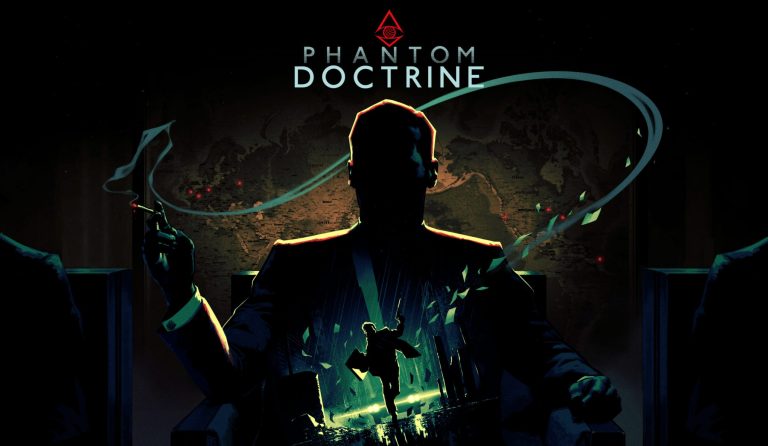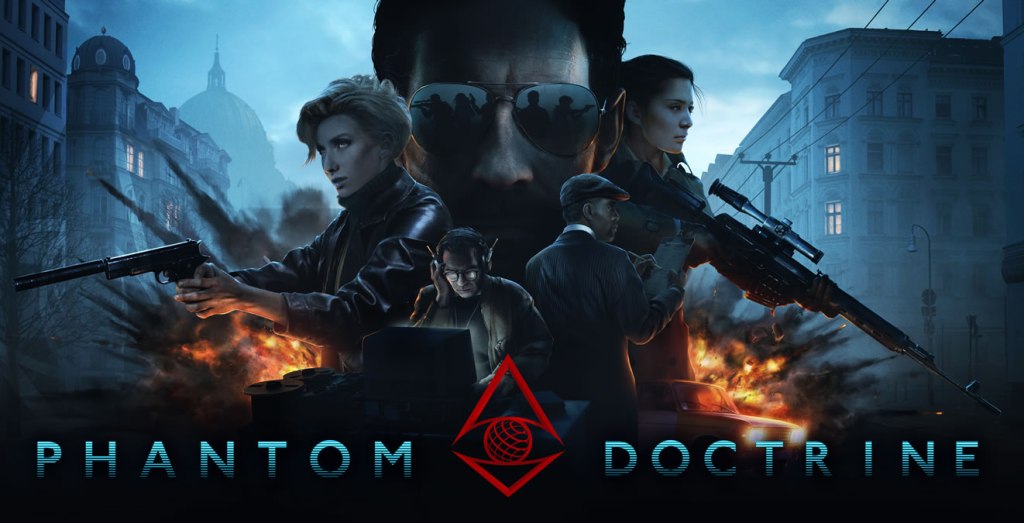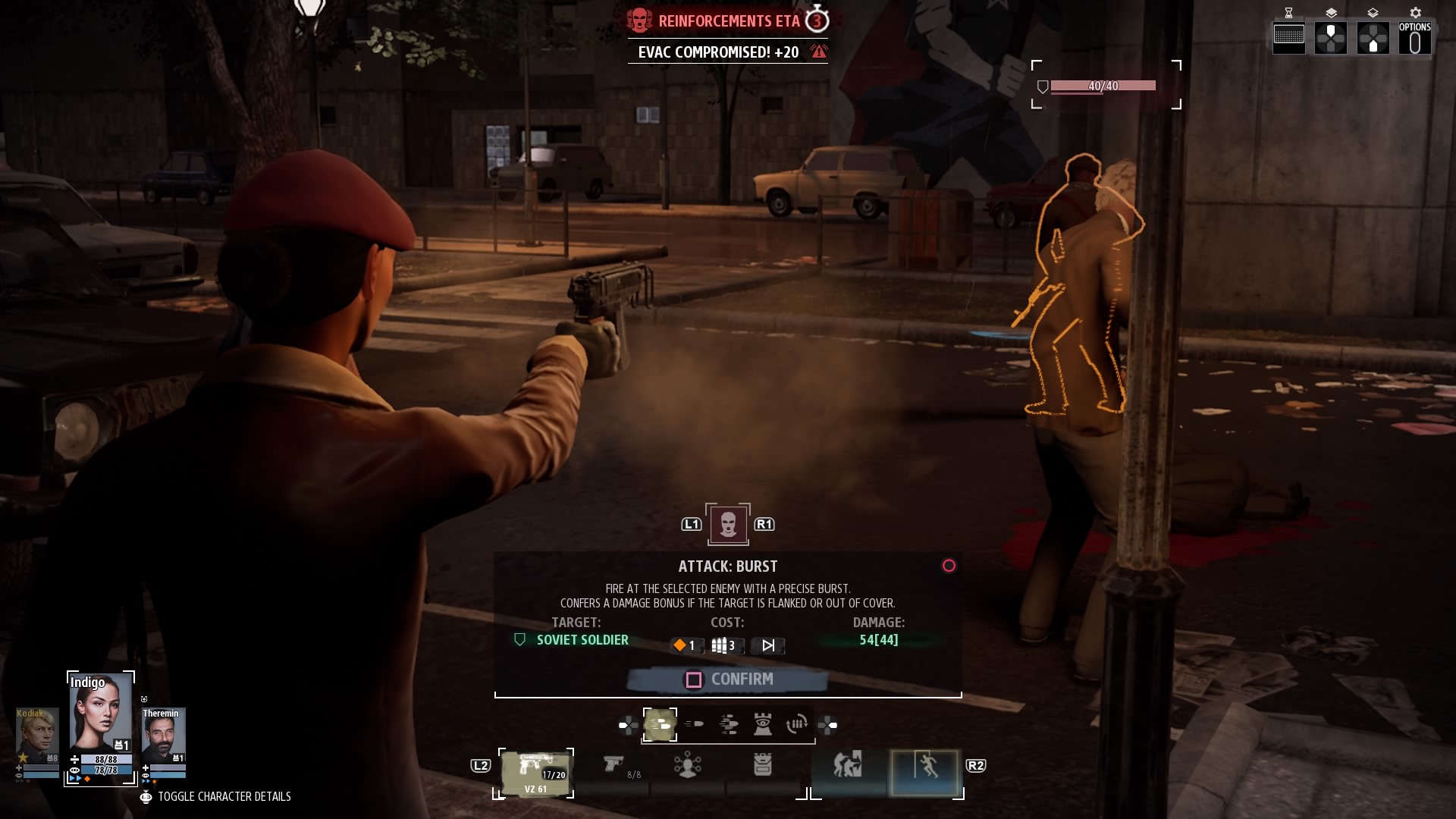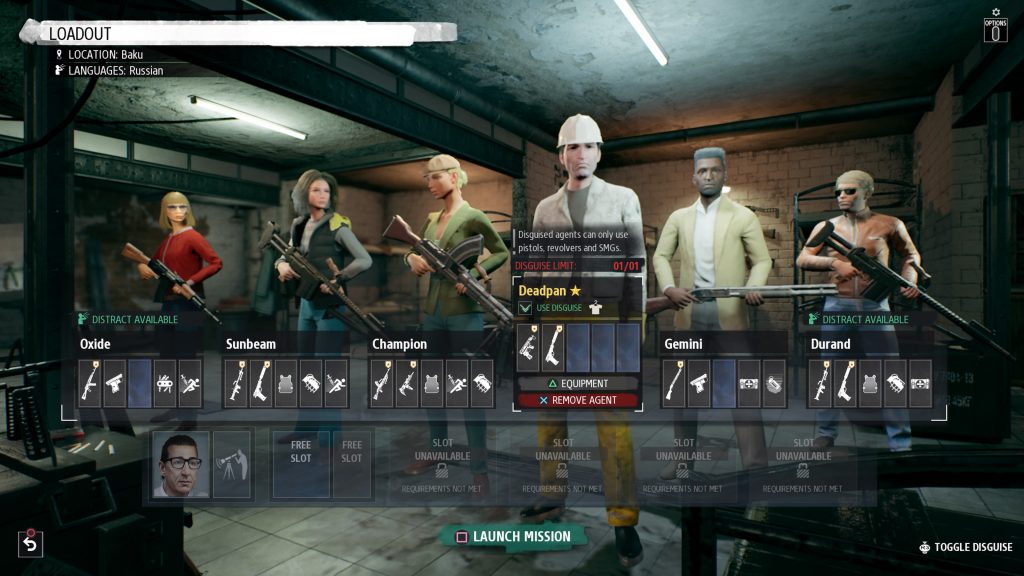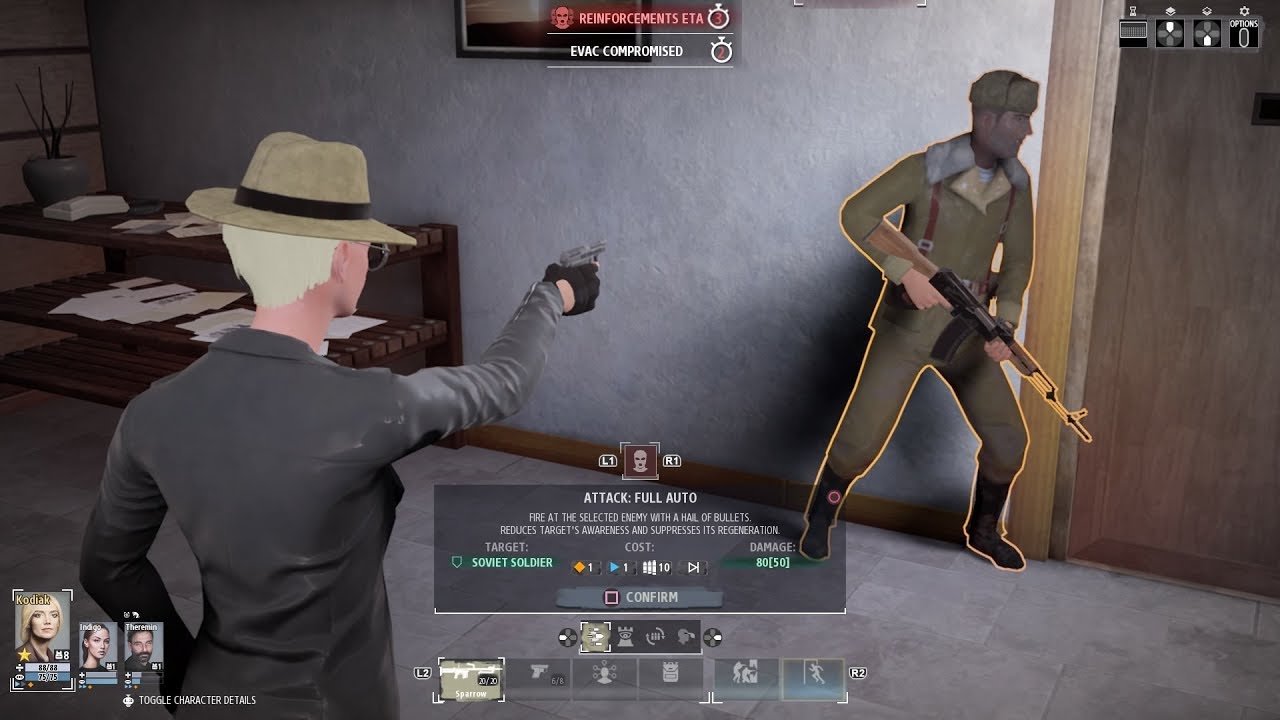They say that “Information is power”. That phrase cannot ring more true than in the world of espionage. Spies need to constantly watch their backs and at the same time be aware that everything that they do will have lasting effects on them and their organization. If you want to stay in the game, keep these rules in mind: Trust no one, not even your fellow spies. Safeguard your Hideout. Keep that information safe, even at the cost of your life. And above all else, get as much information as you can from the enemy. Lives are at stake.
Reviewed: PS4
Platforms: Xbox One, PlayStation 4, PC via Steam
Developer: CreativeForge Games
Publisher: Good Shepherd Entertainment
Release Date: August 14, 2018
MSRP: $35.99
Review code provided by Good Shepherd Entertainment
Overview:
Phantom Doctrine is Cold War themed tactical turn based stealth game that emulates the thrill of leading a spy ring. Lead your organization, “The Cabal”, against the “Beholder Cell” and their allies. Uncover a conspiracy that may yet throw the world into chaos, or worse. Choose between the KGB or the CIA and hunt down this enemy before they find you.
Gameplay and Features:
The game is split between 2 main modes: Assault missions and Hideout activities.
At the start of Assault missions, you will have to choose the area in which your team will be deployed. From there, it is your job to make your way to the objective and carry out your mission. In most missions, the starting area is usually free for your agents to walk around – in short, your Infiltration phase. In this phase, you can probe the enemy’s defenses without casting suspicion. Gathering as much information as possible about the level’s layout is key to a successful mission. Restricted areas are marked in red and surveillance cameras alert the guards of any intruders. If you are spotted by a civilian or a guard in a restricted area, the game enters the Combat phase.
In Combat phase, all disguises are void and enemies will actively seek out the team. At this point, it is best to rush the objective. Regardless of how much blood shed occurs. Enemy reinforcements will always arrive, adding to the tension. Furthermore, there is always the possibility of running into powerful enemy agents. Losing one of your agents to them will have dire consequences for your hideout. Assault missions can end without ever going into the Combat phase. It is much harder than it seems but it is the only way for your team to avoid any Danger that may compromise the location of your Hideout.
Getting spotted during espionage work is the quickest way of endangering your operations and puts you one step behind the enemy. If an agent continues to gain Heat, the likelihood of capture by the enemy also goes up. The more you leave behind for the enemy to get their hands on, the closer they are to exposing the location of your Hideout. Once the enemy knows the location of your Hideout, it is practically Game Over. If not for the fact that the Hideout can be moved at great expense. That is the cost of continuing the campaign.
After the mission, you have to return to your Hideout where you have to decipher information and work towards stopping the bigger conspiracy at hand. From your Hideout, you can recruit more members into your Cabal, have injured agents heal in the infirmary, research items and additional facilities in the Workshop, and assign agents to decipher intel in Analytics.
The Investigation Board and the World Map are the 2 screens that is essential to the progress of the game. In the Investigation Board, it is your job to find links between organizations and Persons of Interest and connect them to each other. This is where the game shines brightest and gives you something more to do besides figuring out the best route for escape. The World Map is where you deploy agents around the world and have them carry out missions for intel. It is only in the World Map that time will advance and story missions appear for the advancement of the story. All information gathered from agent activities will eventually end up on the Investigation Board. From there, it is only a matter of rinse and repeat until the whole picture is clear.
The Good and the Bad:
If you’ve ever played games like XCOM, then you’re in familiar territory. Much of the gameplay is similar to that of XCOM but with a few tweaks that more or less puts the emphasis on stealth and not just seek and destroy. In XCOM, the less turns you take is actually beneficial to the player, making actively seeking out the enemy the better strategy. It is not the same case for this game. The straight path to the objective is usually the one that brings in the most heat. I had to change up my line of thinking and opt for stealth rather than force.
As much as I want to do the cheesiest of strats and avoid all contact with security, the game does a good job of baiting me into tense situations by leaving behind bits of intel and equipment on the map that no doubt prove useful for the Cabal. Not only that, there is no limit to the amount of turns you can take. Making you think twice before acting. To top things off, the game is designed in such a way that the more aggressive the player is, the more Danger it brings to the Cabal. Forcing players to leave as little trace of their operation behind so as not to blow their covers. Thankfully there are facilities like the Forger that can bring down an Agent’s heat with a new identity.
One of my biggest gripes with the game lies in the fact that the Combat phases feel so incredibly one sided. I usually try my hardest to avoid combat. Not because there is some incentive for staying in stealth, but in how awkward combat is in this game. The amount of damage applies within a maximum and minimum value. The hit is guaranteed for the most part, with only awareness factoring in for a dodge. But awareness runs out and enemies appear to have near unlimited range. It also doesn’t help that if your chosen custom field agent dies, it is game over. The frustration stems from the fact that if one of your agents goes up against 3 or more opponents, it is almost certainly a guaranteed death.
Final Verdict:
The world of espionage is a dangerous one, not at all as advertised in the movies. James Bond never had to worry about his identity leaking out during his escapades. In any case, the game does a good job with stealth and base maintenance. It does, however, stumble in the combat department. Once you make sense of the game’s various mechanics, it is actually a fun game. It’s just that pesky figuring out phase that really slows down the pace of the game.
If you find fun in managing your very own spy ring or in the mood for some puzzle solving in the form of the Investigation Board, I highly recommend this game. If you are by chance a fan of XCOM games or something similar, then I suggest trying this out. Just be extra careful when it comes to combat.
